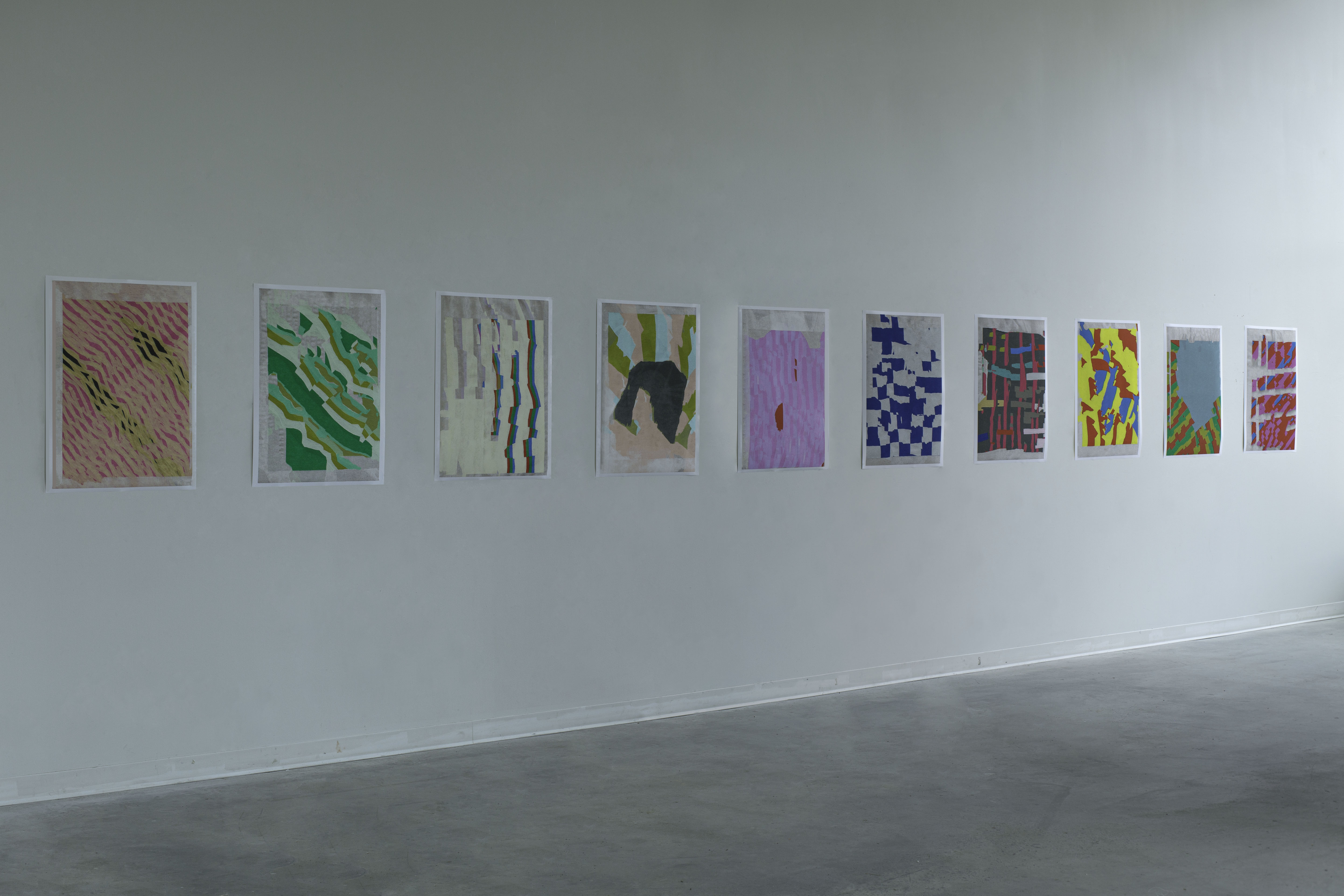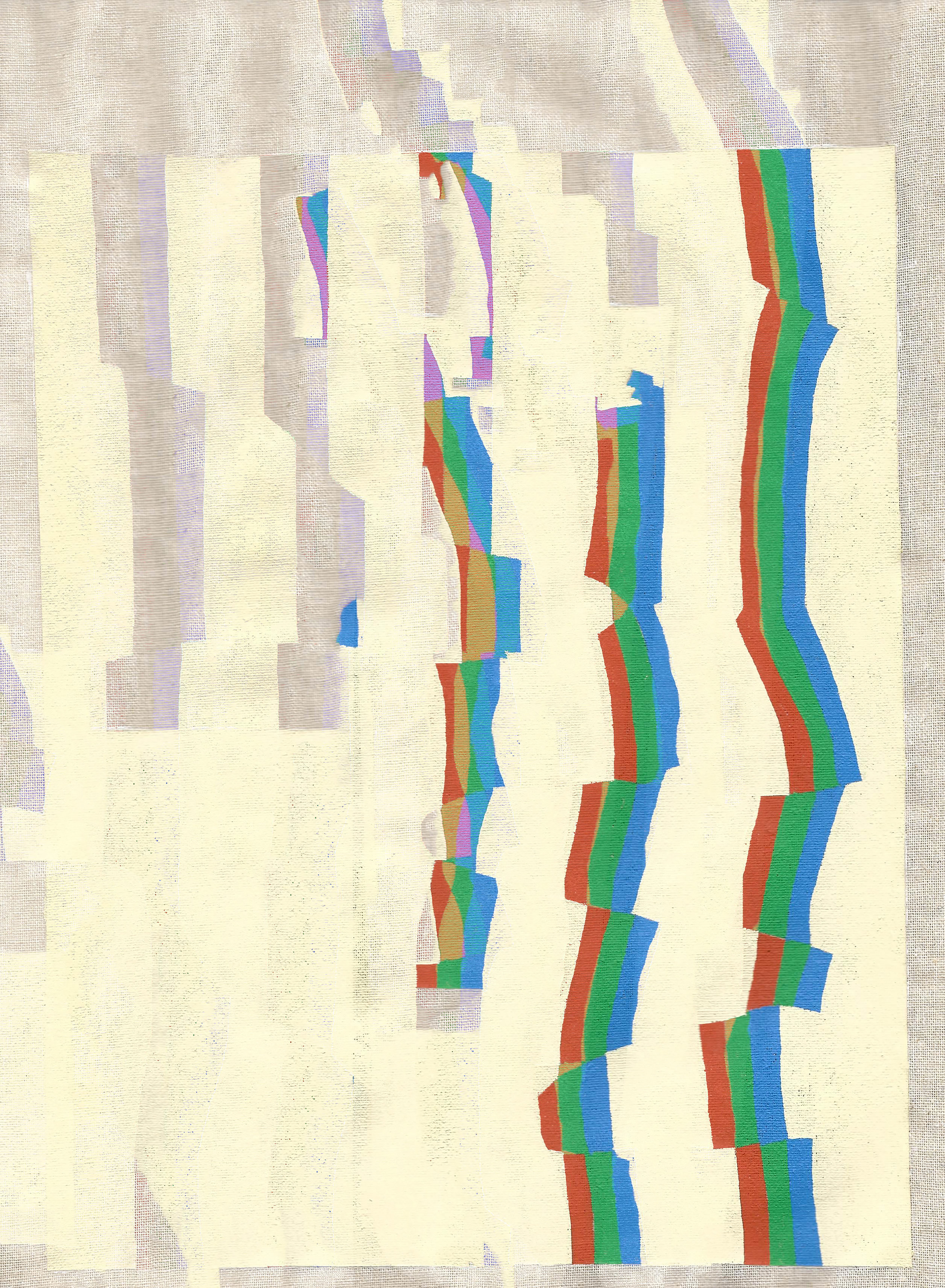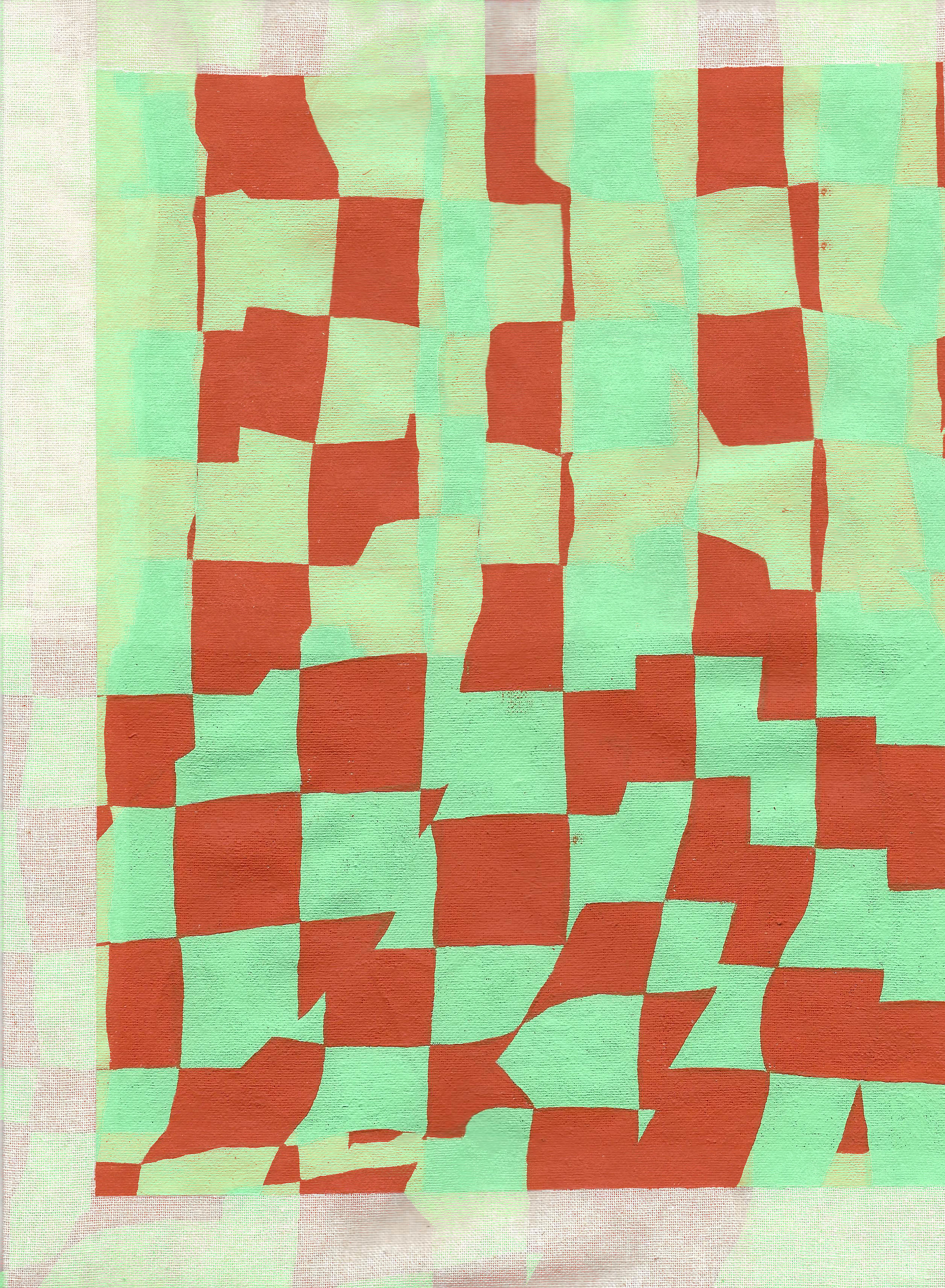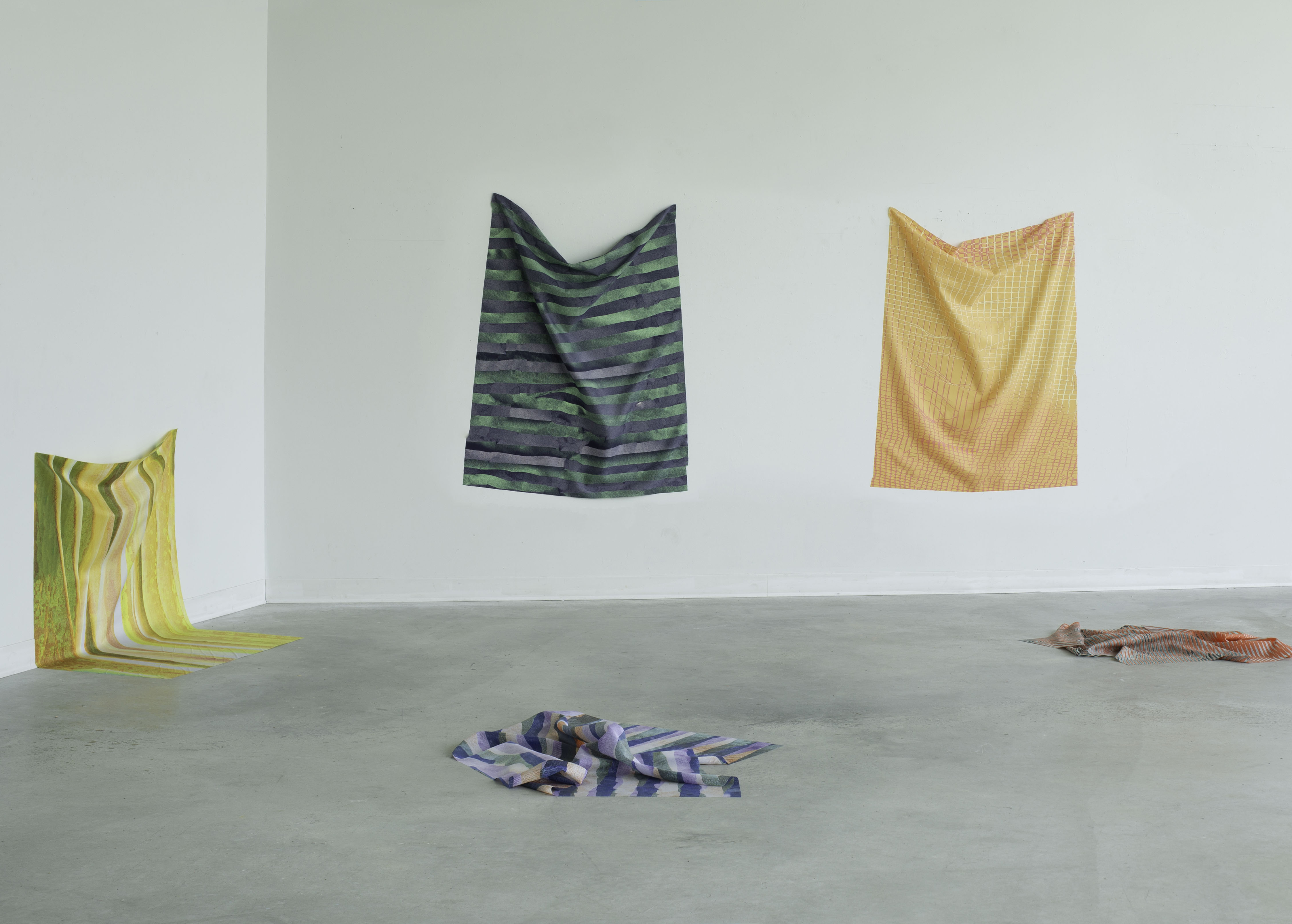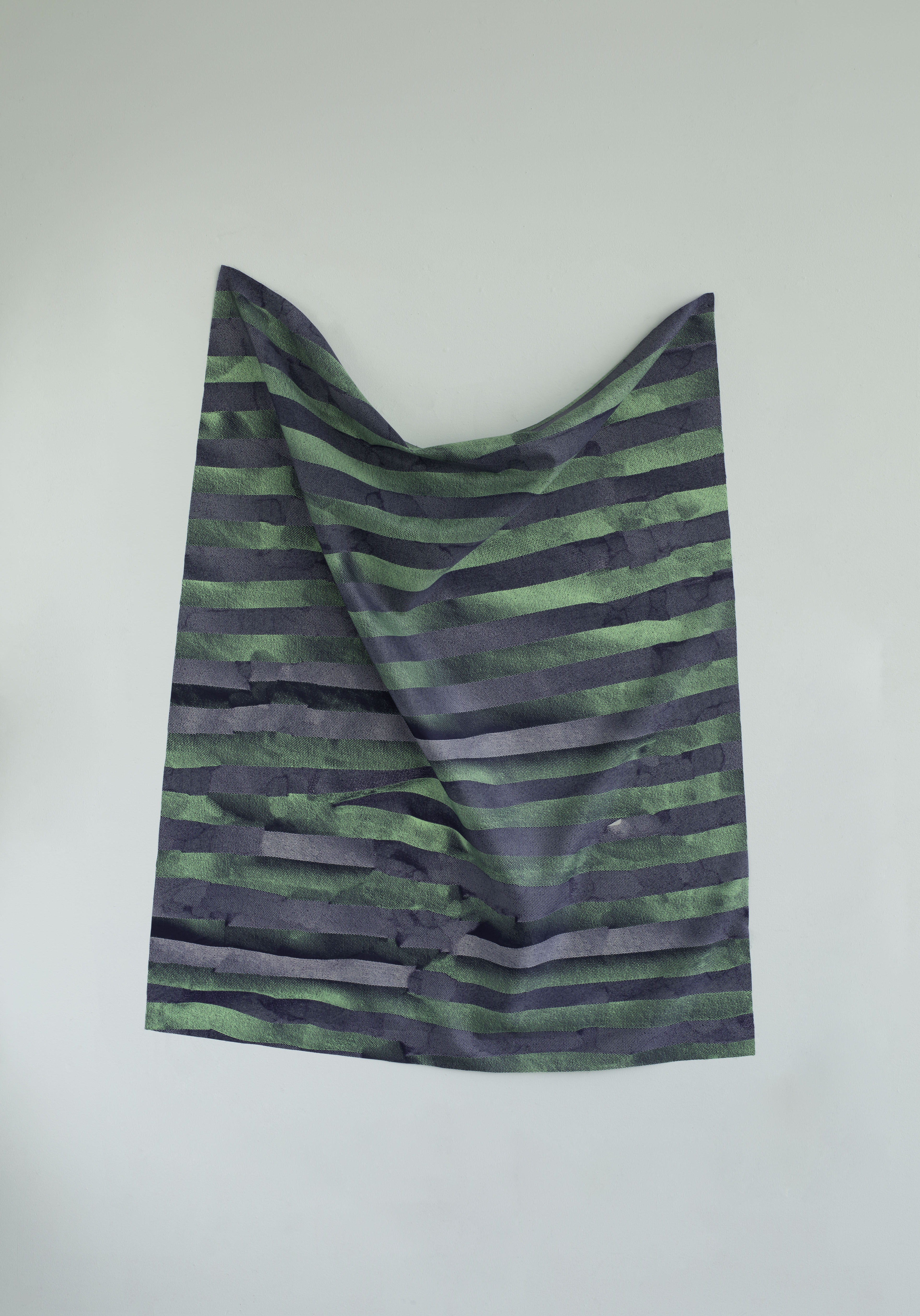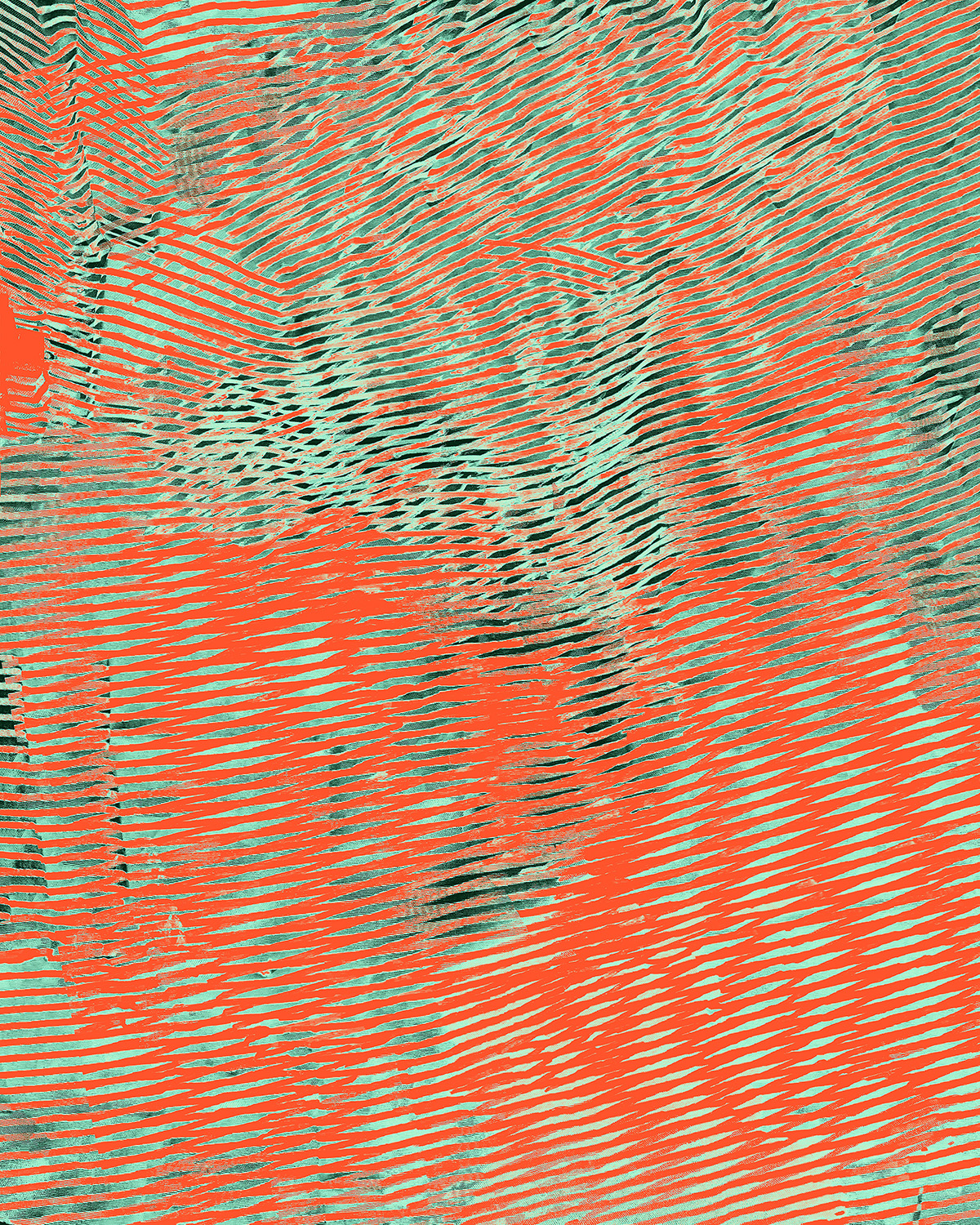Texture, pattern, and hands-on processes play a crucial role in my practice, which in the past has manifested through experiments with fabric, textiles, printmaking, ceramics, and painting. A thread through all of my work is the contemplation of the soft architecture of fabric folds, and how my portrayals of them hover between abstract and representational.
The two bodies of work that I made this year focus on the legitimization of mistakes through translating works from digital to physical, vice versa, and back again. I have been navigating my naiveté in digital media and allowing tools and programs I am unfamiliar with to manipulate a scanned image of a painting that I have physically made or a photo that I took in passing without much thought.
The first body of work started with paintings of a familiar subject of mine: folded striped fabric. Before the introduction of technology to my work, my paintings show off the materiality of the paint as well as the surface they are on. Once scanned in high definition, these qualities are amplified due to the flatness of the new image. However, they now have a sort of intentionality to them once given space on a digital screen. I take these images to Photoshop to rudimentarily edit them with naive mark-making and tools like the Spot Heal Brush Tool, which makes the program anticipate what I am trying to “fix”, often introducing colours that were never there, and amplifying the texture.
The second body of work focused on legitimizing mistakes that are typically either edited out or avoided. Such “mistakes” include moiré lines, over-saturation, pixelation, and blurriness. I found forgettable photos that I had taken in the past and digitally introduced these characteristics, and then printed them on poly-silk, which flows in a very synthetic and almost digital way; when I had planned how to present these pieces, I made mockups in a program that simulated flowing fabric and behaved very similar to the material that I printed the images on. After translating these images from digital to physical, the mistakes became features of the work.
Website
Email
Instagram
